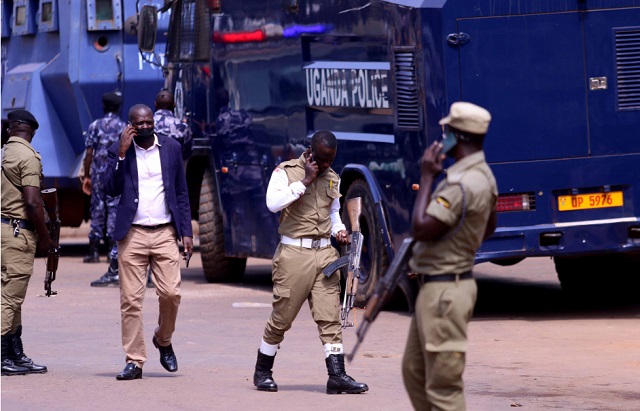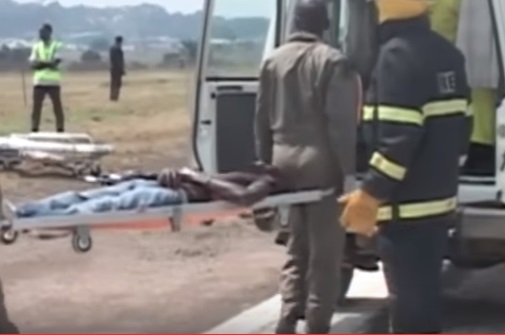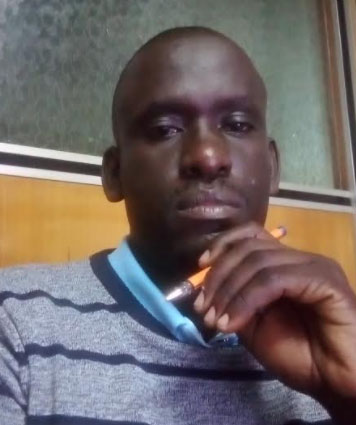
COMMENT | Samson Tinka | The twin bomb blasts that rocked Kampala on Tuesday 16th Nov 2021 sent everyone pacing especially those that were in the city centre. A number of people died whereas other were either critically or slightly injured. Businesses like banks and shops closed, transport was also paralyzed.
This incident triggered my thoughts on emergency contingency plans and the relevancy to business continuity and overall damage control on both private businesses and government operations.
In real life, eventualities will happen in different forms from bomb blasts to fire outbreak, floods, heavy storms, long power black outs, internet failure etc. All these incidents mentioned above impact on both our lives and businesses whether government, organizational or personal. At whatever level, we need emergency contingency plans-ECPs and business continuity plans-BCPs.
Contingency planning is a management tool that involves all parts of an organization. It can help ensure timely and effective humanitarian aid to those who need it most.
A complete contingency planning program has three major elements:
- Emergency Response
- Crisis Management
- Business Continuity: Business Recovery and Business Resumption
Making a contingency plan involves making various decisions as an organization before an emergency happens. These decisions range from how to manage human and financial resources, how to best coordinate internally and with partners, and what communications procedures to put in place.
The contingency planning process can be broken down into three simple questions: What is going to happen? What are we going to do about it? What can we do ahead of time to get prepared?
It is often used when there is a specific threat or hazard which is likely to impact an organization. But it is also important to consider less likely scenarios and develop contingency plans accordingly.
Contingency planning must be a collaborative effort. And plans must be linked to the plans, systems and processes of governments and partners.
Another critical aspect of emergency contingency plans is the crisis management teams-CMT. The goal of crisis management is to have a system in place to effectively address the coordinated response, resources, and internal and external communication requirements during and after the negative situation.
What was observed after the two twin bomb blasts?
- It took a long time for responders to reach the bomb blast scene especially security officers. It’s the man nearby who kept picking fire extinguishers to fight fire that had gutted the nearby vehicles. His impact ca not go un recognized. It was massive effort.
- Many security officers were observed giving different interviews and set of information to the media. This would have been a preserve of the crisis communication team
- The public came back to the scene to see what had happened. In most bomb blasts, there is always a secondary blast, and this is the most deadly because of its impact on those that have come back to the scene. It’s advisable that once you servive the first blast, take shelter far away from the scene of the blast. Go and watch events on TV.
- Give security forces and emergency responder’s space and time to respond effectively to the incident.
- Media fraternity exposed themselves by accessing the scene unprotected and trying to force interviews from the security forces.
What should be done?
According to Dr. Dennis F. Sigwart, Emeritus Professor, Western Illinois University, current and future security professionals should be aware of the absolute necessity of disaster planning and preparedness as a viable component of the many facets (fire, earthquake, explosions, flooding, and so forth) of which they will have to perform as a practitioner. Those assigned disaster preparedness tasks must continually play the “what happens if” game.
Said another way, drill scenario and testing is akin to being a player on a practice field. Practice often makes perfect, builds confidence and camaraderie among players and streamlines the incident management response process.

Drill scenario testing on a frequent basis cannot be overemphasized enough. Fire safety, Fire Prevention and Protection), and emergency (contingency) planning is designed to anticipate what might happen to endanger people, physical assets, and information (thus causing damage and interruption to normal business) and to take the necessary preventive measures and make provision—through the use of appropriate hardware and/or personnel response—for prompt and effective action when an emergency does occur.
While the emphasis in this article (as in most actual practice) is on physical safeguards, it is important to emphasize the human aspect. Disastrous losses often occur not from the failure or absence of physical safeguards, but from human error—the failure to close a fire door, to maintain existing protection systems in good working condition, to inspect or to report hazards, and, at the management level, to ensure through continuous employee education and training that the organization remains prepared at any time for any emergency.
Emergency contingency plans emphasize dry drills and simulations. These two helps us to perfect our roles individually and teams during crisis management. The drills should be done at least twice a year and should be auditable. This is a very critical deliverable of security department.
It’s high time that businesses invest in security function for this specific and other functions. Security unit has since become critical to the day to day functioning of any organisation through risk/threat analysis and mitigation, access control management, fraud prevention, scene of crime management, security awareness and training, business intelligence, among other functions. Institutions, businesses, and organisations ought to support its security personnel through training, purchase of relevant security equipment so that businesses don’t vanish because of security and safety incidents.
 Samson Tinka is a safety and security consultant | Director Matts Secure Solutions Ltd | tindsam@yahoo
Samson Tinka is a safety and security consultant | Director Matts Secure Solutions Ltd | tindsam@yahoo
 The Independent Uganda: You get the Truth we Pay the Price
The Independent Uganda: You get the Truth we Pay the Price



